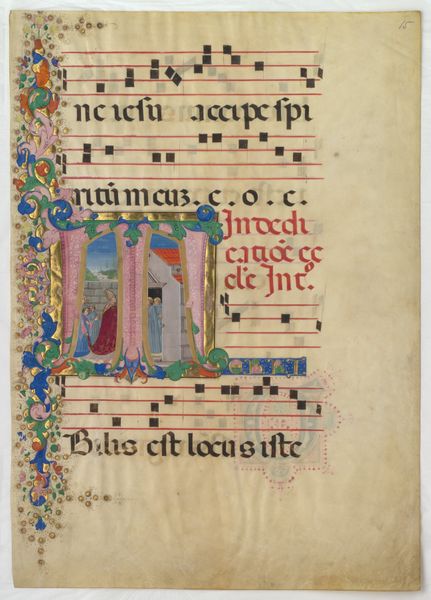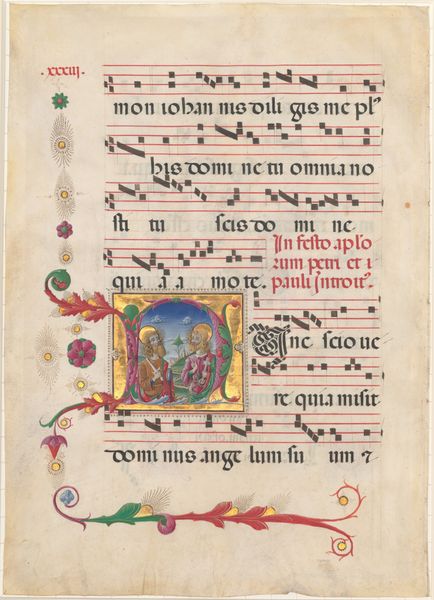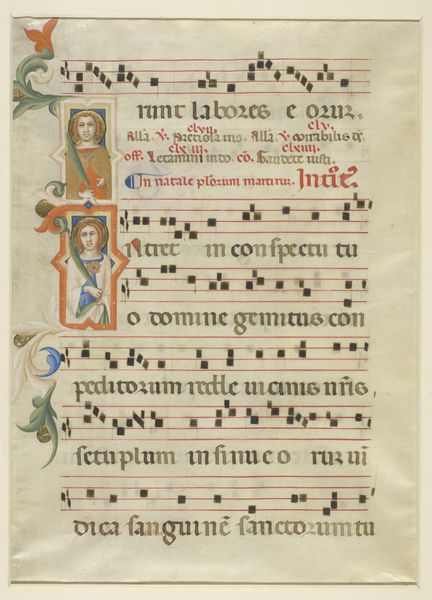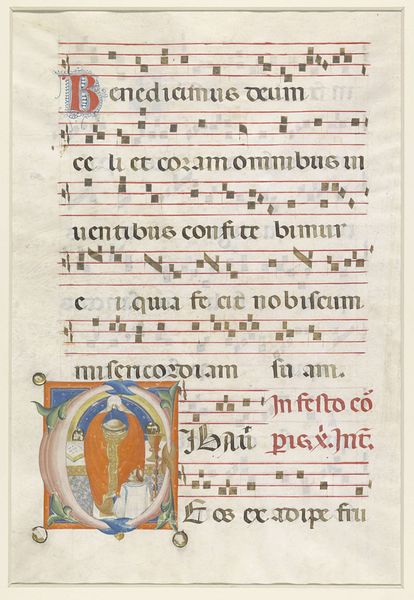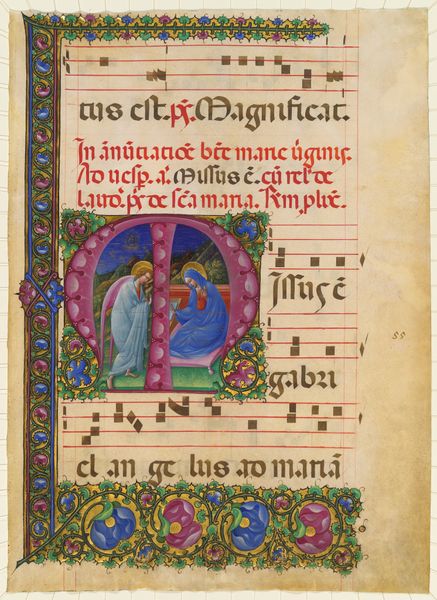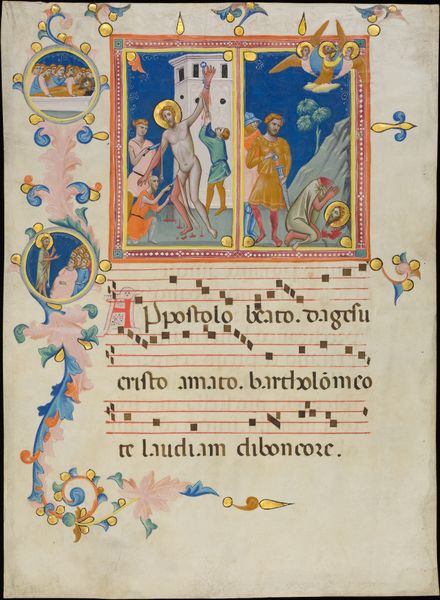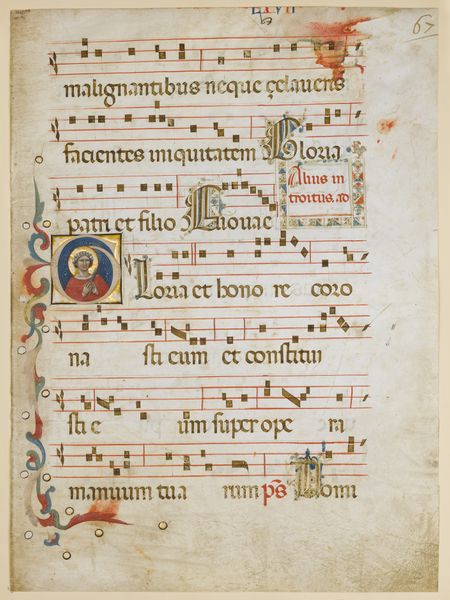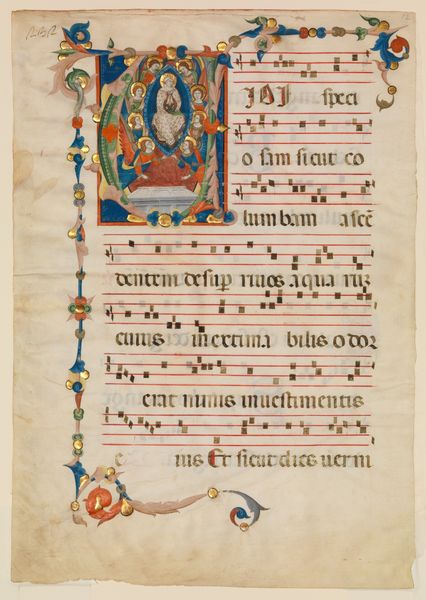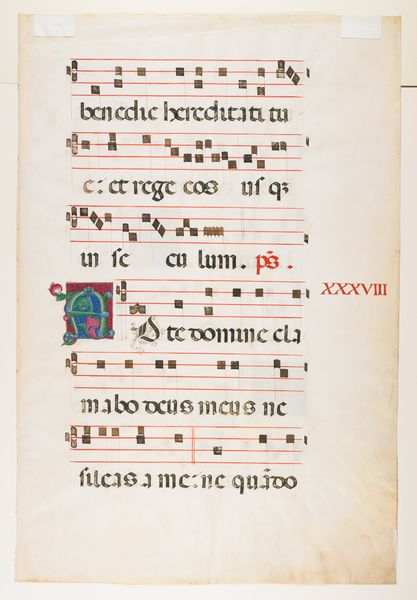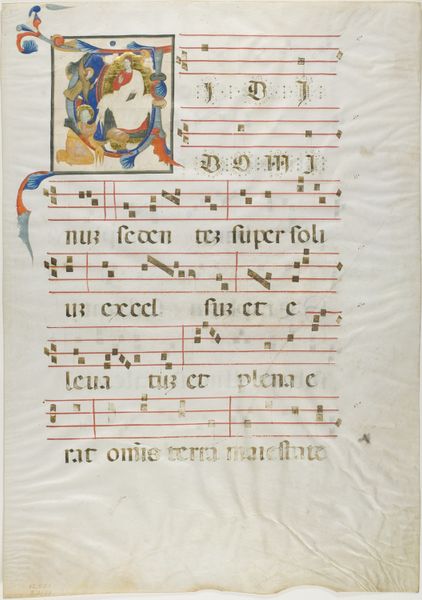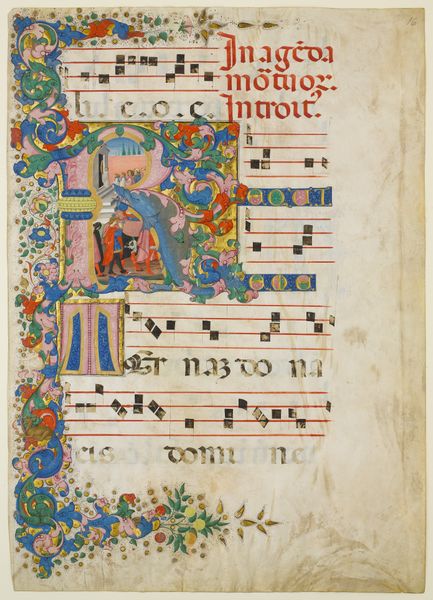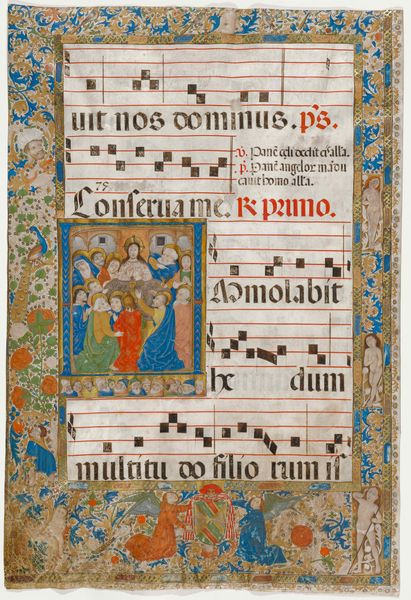
tempera, ink, pendant
#
byzantine-art
#
medieval
#
tempera
#
ink
#
miniature
#
pendant
Dimensions: 20 3/4 × 14 7/8 in. (52.71 × 37.78 cm) (sheet)29 5/8 × 23 5/8 in. (75.25 × 60.01 cm) (outer frame)
Copyright: Public Domain
Editor: This is a page from "Salvator Mundi (Savior of the World)," a medieval manuscript dating roughly from 1425 to 1450. It's housed here at the Minneapolis Institute of Art, and it's made with tempera and ink, even features as a pendant. What strikes me is the juxtaposition of the somber religious figure with these wonderfully whimsical marginalia. It almost feels like a conversation between the sacred and the everyday, What do you make of it? Curator: It’s interesting, isn’t it? This is essentially a portable devotional object. Think of it as someone's pocket-sized spiritual retreat! And that interplay you noticed – it's very characteristic of illuminated manuscripts. The main image serves a theological purpose but the borders practically burst with creative freedom! Tell me, what does that freedom say to you? Editor: It's like the artists are winking at us. It feels very alive and imaginative; those beasts in the borders bring it all to life! It clashes a bit with the apparent gravity of the subject. Curator: Exactly! That tension is key. There’s a real human touch in that. Those “dragons” may seem out of place now, but for the original audience, they’d be instantly recognizable symbols, woven into their understanding of the world and its spiritual forces. Look closely, though, the plants and small fruits growing on them are not of this world, it is like something from a different dimension. And the hand in the middle points to... creation? Maybe it speaks of the world to come... or simply of what already is. I really find beauty here. Editor: That’s fascinating! I'd just assumed it was decoration, and the text is musical notes it would seem. The "real human touch" idea completely shifts my perspective, in this kind of devotional imagery that wants to offer the tools for introspection and thought... and even joy! Curator: Indeed! Every little beast here, those red painted music scales, they help make the manuscript and they want to pull us to contemplation. They work wonders to call you there. Now I feel like singing!
Comments
minneapolisinstituteofart almost 2 years ago
⋮
The decorated letter "I" shows Christ pointing to a disk-shaped mappa mundi (map of the world), a medieval representation of the then known lands, encircled by the ocean. The image is apt, for this "I" introduces the phrase In principio fecit deus celum et terram (In the beginning God made heaven and earth), with which the book of Genesis opens. The musical notation—neumes (square notes) marked on a four-line staff—is typical of Gregorian plainchant, liturgical music that developed in the Western Church beginning in the 8th century. A leafy scroll climbs the border, rising from the dragon at the bottom and pecked on top by a bizarre bird. Sophisticated decoration, rich colors, and sinuous lines are characteristic of the so-called International Gothic style.
Join the conversation
Join millions of artists and users on Artera today and experience the ultimate creative platform.
